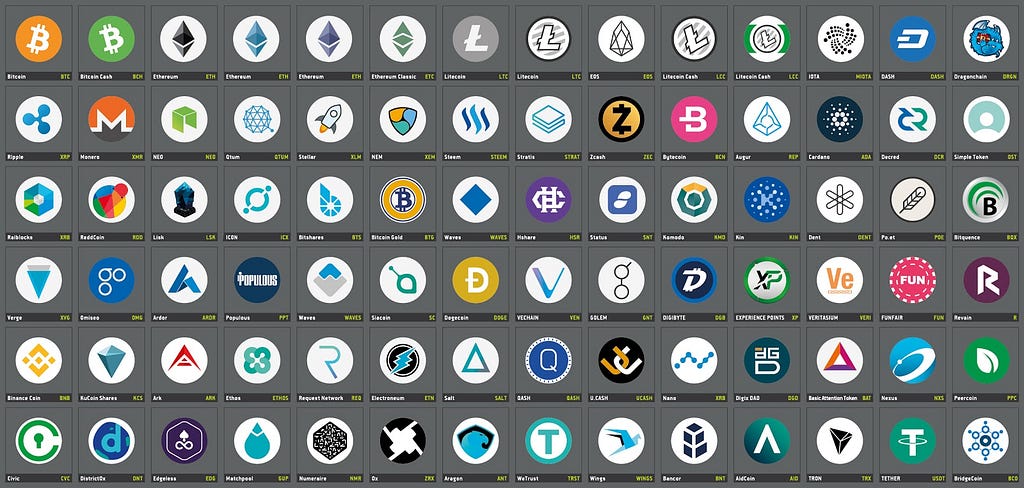Latest news about Bitcoin and all cryptocurrencies. Your daily crypto news habit.
 An age-old battle
An age-old battle
The biggest opportunity to disrupt the financial services marketplace is with the tokenization of securities. To understand what that means, let’s talk about context: it begins with blockchain.
Without question, blockchain has been the buzziest technology in the past 12 months, longer for those in the know. In essence, blockchain is a ledger technology in which digital trades are tracked publicly where anyone and everyone can see them, and to edit this public ledger or add a new entry, there must be a computational consensus to verify it (this makes it very difficult for bad people to tamper with the ledger). There are many longer, better explanations of how blockchain works, but that is not the purpose of this article.
What is important to know about blockchain is that the technology enables three types of crypto assets:
- Cryptocurrencies: digital money like Bitcoin that allow users to make payments. These currencies are not tied to a specific country and can be transferred across borders instantly and without hefty international fees.
- Utility tokens: tokens that are used to access a protocol or a service. Think of a digital version of an arcade token. In the same way that Chuck E. Cheese tokens let you play Chuck E. Cheese games, a job board like Indeed could have Indeed Tokens, which let companies list jobs or individuals post their resume. In essence, these utility tokens are how users interact with a product while incentivizing network effects and participation.
- Security tokens: tokens that represent assets defined by ownership. This includes real estate, property, debt, different types of equity, you name it. It’s the last two, representative of business investments, that I’m most interested in, and these types of securities will be the focus of the rest of this article.
What’s the big deal?
If you think about all of the nearly 28 million small businesses in the US (it’s worth noting that over three-quarters of these are non-employer companies) versus the 3,671 companies publicly traded on US exchanges — a figure that is declining over time due to the difficult and expensive nature of being a publicly traded company in the US, there is really no comparison in the total market capitalization of the two. Small business wins every time.
Every year 70% of new job creation is from these small businesses. They are the economic backbone of our country, and many, if not most, of these small businesses need capital. Enter the sale of securities in private companies to investors: venture capitalists, angels, and, since the JOBS Act, the crowd — more on that in a bit.
If we are talking about tokenizing the securities of those small businesses, whether we are talking about small business debt, equity, convertible note, whatever the structure may be, it’s important to know that we are talking about a lot of money. On the scale of trillions of dollars. This is why solving how securities can be tokenized and moved to the blockchain is a VERY big deal.
Why tokenize at all?

Tokenized securities improve the current financial marketplace because they cut out the middlemen (banks, etc) and open the market for securities trading. This means lower fees, more market exposure as deals are public and so visible to everyone with internet connection, more trading due to this larger investor base, and faster deals as there are no middlemen to elongate the process. Sounds great right?
However, the problem of how to tokenize securities is not as simple as describing its benefits. There are several reasons for the complexity of tokenization, but the primary issue lies with how securities are sold to investors. Typically, most private companies will sell shares to wealthy investors with many built-in restrictions in the purchase agreement. Below are just a few of them.
Right of first refusal
The right of first refusal (or ROFR) is a common clause in investment deals. If an investor wants to sell their shares to another investor, they first have to offer those same shares to the option holder (usually the company that offered the shares) with the same received offer. If they pass on the option, then and only then can the investor sell to the new buyer.
This is a big problem for liquidity. The investor needs to first find a buyer and then convince the buyer to make a written offer that is conditional on the company accepting the transfer. The terms of a right of first refusal usually gives the company 30 to 90 days to respond. This is a deal killer as it creates friction for investor-to-investor liquidity and also complicates a deal that an investor may have been only mildly excited about in the first place.
Transfer restrictions
Purchase agreements also often include transfer restrictions. Typically, an investor can freely transfer shares to their next of kin, their children, or to a trust controlled by the investor. Transferring shares to another investor is just not permitted through many purchase agreements.
The reasons why are varied: perhaps the company offering shares wants its early investors to remain committed to the project or perhaps the company doesn’t want a stranger having control over the company or not have the risk to exceed 2,000 shareholders which would force the company to become a reporting company (this is mainly for Regulation D offerings). Whatever the reason, these transfer restrictions reduce liquidity, which is one of the primary benefits of tokenized securities, and these transfer restrictions reduce investor interest in the offering.
SAFE and other derivative agreements
One of the big innovations in selling shares comes from Silicon Valley, in particular from the successful Y-combinator accelerator. That innovation is the SAFE, which is a Simple Agreement for Future Equity. In essence, a SAFE is a sale of a derivative equity stake, which is a future promise to deliver equity. The investor actually gets no equity at the time of sale. Rather, the investor receives equity once certain triggers are met, such as getting a “qualified” investor to purchase equity in the company.
This derivative is nearly impossible to sell because the investor does not know the terms of the purchase. How many shares are transferred is unknown, so investors don’t know how much their stock will be diluted. Furthermore, there is no maturation date, so there is no timetable on when the SAFE will be converted into equity, and there is no interest in the meantime.
Unfortunately, many funding portals have extensively used this agreement to raise capital from investors for companies using the new Regulation Crowdfunding rule, which permits companies to raise capital directly from the general public. The main street investor who cannot afford to wait seven years for an exit is locked up as investors are uninterested in buying SAFEs on the secondary market because they are so difficult to price.
The solution for a tokenized world

When we talk about the world of tokenized securities in private companies, what we are really talking about is the crowd’s participation in purchasing and selling those securities, as that is where token liquidity will flourish.
However, despite what crypto enthusiasts may say, securities in private companies, including these new security tokens, have been, and will be, subject to federal securities laws. This means that the sale of securities must be registered with the SEC or use an exemption from registration under the Securities Act of 1933. There are 3 exemptions which are relevant to the US. Those are:
Regulation D 506(c): which permits the sale of securities to accredited investors only, but with no raise ceiling so a 506(c) offering can raise as much capital as the company likes to the degree that investors are willing to buy.
Regulation A+: which permits the sale of securities to accredited and non-accredited investors, but with an annual cap of $50M.
Regulation Crowdfunding: which permits the sale of securities to accredited and non-accredited investors with an annual cap of $1.07M. The differences between Regulation A+ and Regulation CF aren’t relevant to the discussion of tokenization and are largely differences in issuer burdens (i.e. Regulation A+ has more intensive paperwork and auditing before an issuer can sell securities).
In order to provide liquidity for investors and create an environment in which tokenized securities can revolutionize finance, companies need to utilize these exemptions while removing transfer restrictions to allow investors to sell their shares pursuant to nothing but the time restrictions under the exemption used to sell those shares in the first place.
For Rule 506(c) under Regulation D and for Regulation Crowdfunding, that time restriction is one year. For Regulation A+, there are no time restrictions, and investors can trade their security tokens immediately after purchase if they choose to.
I believe that investors will request that restrictions in purchase agreements to be lifted as a condition to investing in the world of tokenized securities. In order to embrace the liquidity possible through tokenization, companies that want to raise capital should not add any restrictions to the sale of common or preferred shares in order to encourage secondary trading. This will increase investor interest, which in turn will increase share price and company value. In the future, tokenized liquidity will be the key to growing a company’s investor base and their value.
Restrictions are great for a company that wants to hold more control over who owns the shares, but it is bad for investors. In an age that is defined by freedom and consumer choice, control is no longer a good enough reason to restrict trade. Companies need to rethink their cap table and embrace the idea that their company can be owned by anyone and by everyone. Is that such a bad thing? Doesn’t sound like it to me.
Thanks for reading, and if you liked it, please clap 50x! If you’re interested in seeing early-stage companies pitch their business, tune in to StartEngine’s Demo Day on May 31, where companies on StartEngine’s platform will be pitching to investors online.
The Future of US Securities Will Be Tokenized was originally published in Hacker Noon on Medium, where people are continuing the conversation by highlighting and responding to this story.
Disclaimer
The views and opinions expressed in this article are solely those of the authors and do not reflect the views of Bitcoin Insider. Every investment and trading move involves risk - this is especially true for cryptocurrencies given their volatility. We strongly advise our readers to conduct their own research when making a decision.
